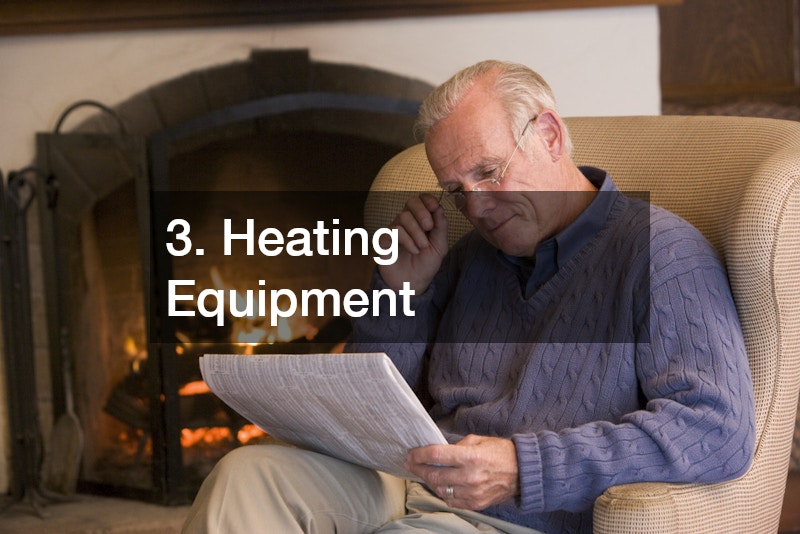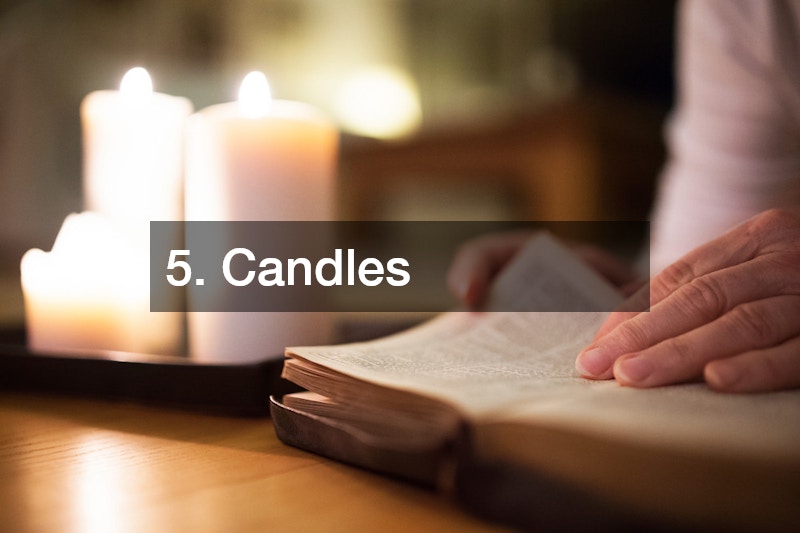House fires can be devastating, causing not only immense property damage but also serious injury and, in the worst cases, loss of life. Many homeowners underestimate how quickly a fire can ignite or how rapidly it can spread throughout a home. A small spark from a faulty appliance, unattended stove, or overheated electrical outlet can turn into a catastrophic blaze in a matter of minutes. According to the National Fire Protection Association (NFPA), the most common causes of residential fires in the United States include cooking equipment, electrical malfunctions, and heating devices, though other sources such as fireplaces, candles, and generators also pose significant risks.
Beyond the immediate danger to property and personal safety, house fires often result in long-term disruption. Families may face temporary displacement, costly repairs, and emotional stress following a fire event. Additionally, insurance claims can be complicated if preventative measures, such as fire alarm inspections or proper appliance maintenance, were not consistently performed.
Understanding the most common causes of house fires and taking proactive steps to mitigate risk can protect both your home and your loved ones, providing peace of mind and reducing the likelihood of preventable disasters.
1. Cooking Accidents

Cooking is the leading cause of residential fires, responsible for nearly half of all home fires according to the NFPA. Unattended stoves, grease fires, or overheated oil can quickly become catastrophic. Even a small spill of hot oil onto a flame can ignite a large fire within seconds.
Examples and Prevention:
-
Kitchen remodelers can design safer layouts, including adequate counter space around stoves and ventilation hoods, reducing the risk of accidents.
-
Never leave cooking food unattended, especially when frying or grilling.
-
Keep flammable items like towels, oven mitts, and paper away from burners.
-
Ensure all kitchen appliances are regularly inspected and maintained. Visiting local appliance stores for recalls or professional advice can prevent fires caused by faulty units.
-
Schedule appliance repair promptly if an oven, microwave, or dishwasher malfunctions.
Case study: A family in Chicago experienced a fire when oil on the stovetop ignited while they stepped out to answer the door. Thanks to a working fire alarm, they evacuated safely, but the kitchen was extensively damaged. Proper supervision and timely appliance maintenance could have prevented this fire.
2. Faulty Electrical Wiring
Electrical malfunctions are another leading cause of large house fires. Overloaded circuits, exposed wires, or outdated electrical panels can spark fires instantly. Homes built decades ago are particularly at risk if wiring has not been updated.
Prevention Strategies:
-
Schedule regular inspections with licensed residential electricians to identify risks.
-
Perform electrical repair immediately for any frayed cords, flickering lights, or tripping breakers.
-
Avoid using extension cords for high-wattage appliances like space heaters or ovens.
-
Upgrade older electrical panels to accommodate modern energy demands safely.
Example: In 2021, a house fire in Texas started when an overloaded power strip in the living room overheated. Had a residential electrician inspected the home earlier, the faulty wiring could have been identified and corrected.
Tip: Integrating circuit breakers with surge protection further prevents sparks during power surges.
3. Heating Equipment

Space heaters, furnaces, and fireplaces are necessary in many homes but can be major fire hazards. Improper use or neglected maintenance can cause fires that spread quickly.
Prevention Strategies:
-
Maintain at least three feet of clearance around heaters.
-
Schedule annual inspections for fireplaces and have chimney cleaners remove creosote buildup.
-
Never leave space heaters running while unattended.
-
Install smoke alarms near heating equipment and check them regularly.
Example: A winter fire in New York occurred when a portable heater was placed too close to curtains. Proper placement and regular inspection could have avoided this emergency.
4. Smoking Indoors
Smoking indoors remains a leading cause of preventable fires, particularly among older adults. Cigarettes, cigars, and even vaping devices can ignite upholstery, bedding, or trash.
Prevention Strategies:
-
Avoid smoking indoors whenever possible.
-
Use deep, stable ashtrays and ensure all smoking materials are fully extinguished.
-
Educate household members on safe disposal practices.
-
Keep flammable items away from areas where smoking occurs.
Example: In a Los Angeles apartment, a fire started when a cigarette fell onto a couch cushion. The blaze could have been avoided by using outdoor smoking areas or proper ashtrays.
5. Candles

Candles provide ambiance but are a common source of residential fires. Fires often start when candles are left unattended, placed too close to flammable objects, or knocked over by pets or children.
Prevention Strategies:
-
Always keep candles away from curtains, bedding, and paper.
-
Consider flameless LED candles for safety.
-
Never leave a candle burning overnight or while leaving the home.
-
Place candles on stable surfaces and away from high-traffic areas.
Example: A family in Florida experienced a fire when a lit candle toppled onto a wooden coffee table. Switching to flameless candles or using candle holders could have prevented the fire.
6. Generators
Portable generators are useful during power outages but are a common cause of house fires if misused. They produce heat, electricity, and exhaust, all of which can ignite flammable materials.
Prevention Strategies:
-
Operate generators outdoors, far from windows and doors.
-
Store fuel in approved containers and never refuel while the generator is running.
-
Follow manufacturer instructions carefully.
-
Have a professional inspect your generator periodically.
Example: During a storm, a homeowner in Ohio placed a generator in the garage. Carbon monoxide exposure and a small fire occurred. Moving it outdoors and away from the home could have prevented both hazards.
7. Flammable Liquids and Chemicals
Improper storage of flammable liquids—like gasoline, cleaning chemicals, or paint thinners—can result in devastating fires.
Prevention Strategies:
-
Store chemicals in cool, ventilated areas away from heat sources.
-
Limit quantities to what’s necessary and clearly label all containers.
-
Avoid using flammable products near open flames or heat.
Example: A garage fire in Denver started when gasoline was stored next to a heater. Safe storage protocols and professional advice could have prevented the fire.
8. Appliances and Machinery

Faulty or poorly maintained appliances are a frequent cause of house fires. Dryers, refrigerators, ovens, and other high-wattage appliances can ignite if not properly cared for.
Prevention Strategies:
-
Purchase appliances from local appliance stores and follow all maintenance instructions.
-
Schedule appliance repair immediately if any unit malfunctions.
-
Clean dryer vents regularly to prevent lint buildup.
-
Have residential electricians inspect hard-wired appliances for safety.
Example: A dryer fire in a Chicago home started from lint buildup. Regular maintenance and inspection would have prevented the incident.
9. Chimney and Fireplace Issues
Fireplaces are a beloved feature in many homes, providing warmth, ambiance, and a focal point for family gatherings. However, without proper maintenance, they can become serious fire hazards. Creosote—a highly flammable substance that accumulates inside chimneys from burning wood—can ignite and lead to devastating chimney fires. Additionally, cracked flues, deteriorating masonry, or blockages can allow flames or embers to escape into your home, creating a risk of a large house fire.
Prevention Strategies:
-
Hire professional chimney cleaners annually: A certified professional will remove creosote buildup, inspect the flue, and check for structural damage. Regular cleaning is especially important for frequently used fireplaces.
-
Inspect and maintain flues: Ensure flues are properly sealed and in good condition. A damaged flue or loose chimney cap can allow sparks to reach the roof or attic, dramatically increasing fire risk.
-
Burn only safe materials: Avoid burning trash, cardboard, treated wood, or construction debris. These materials can produce excessive sparks, toxic smoke, and faster creosote buildup. Stick to seasoned firewood that burns efficiently.
-
Combine maintenance with fire safety systems: Regular fire alarm inspections complement chimney care. Smoke detectors in adjacent rooms provide early warning if a fire begins to spread beyond the fireplace.
-
Check surrounding areas: Keep combustible materials like rugs, curtains, and furniture at least three feet away from the fireplace. Install a sturdy screen to prevent sparks from escaping.
Example: In Boston, a family experienced a chimney fire that quickly spread to the roof, causing significant property damage. The fire was traced to creosote buildup and a small crack in the flue. Had the homeowners scheduled annual inspections and cleaning with a professional chimney cleaner, the hazard could have been detected and mitigated before a fire started.
10. Neglected Fire Safety Practices
Even small oversights, such as missing or nonfunctional smoke detectors, blocked exits, or improperly stored fire extinguishers, can quickly escalate what might have been a minor incident into a large house fire. Fire safety is not just about responding once a fire starts—it’s about preventing fires from growing and ensuring everyone in the home can evacuate safely.
Prevention Strategies:
-
Conduct fire alarm inspections regularly: Schedule a fire alarm inspection at least twice a year, ideally in the spring and fall. This ensures your detectors are functional and meet current safety standards. Smoke alarms have a limited lifespan, so replacing older units is crucial.
-
Test and maintain alarms: Replace batteries at least once a year and test alarms monthly. Consider installing interconnected smoke detectors, which trigger all alarms simultaneously for faster alerting.
-
Properly place and maintain fire extinguishers: Keep at least one fire extinguisher on every level of your home, especially in high-risk areas like the kitchen, garage, and near heating equipment. Make sure family members know how to use them correctly.
-
Clear exits and practice evacuation plans: Ensure all doors and windows are accessible and free of obstructions. Develop and rehearse evacuation routes with your family, including alternative paths in case primary exits are blocked.
-
Integrate additional safety measures: Combine smoke alarms with carbon monoxide detectors, heat sensors, and fire-resistant materials in high-risk areas. Using a checklist for fire safety helps you systematically review and maintain all protective measures.
Example: A home fire in Arizona caused extensive damage because the smoke alarm was outdated and nonfunctional. The fire spread rapidly before anyone could respond, leading to significant property loss. Had the homeowners performed regular fire alarm inspections, replaced aging detectors, and maintained accessible exits, the incident could have been mitigated or prevented entirely.
By prioritizing fire safety practices, maintaining alarms and extinguishers, and ensuring all household members are trained on emergency procedures, homeowners can drastically reduce the risk of a large house fire. These simple, proactive measures not only protect property but also save lives, making them a critical component of responsible homeownership.
Maintaining a Fire-Safe Home
Proactive maintenance is essential to prevent fires. Regular checks by residential electricians and appliance repair professionals, along with annual chimney cleaners, ensure that potential hazards are addressed before they become emergencies. Proper fire safety protocols, like having generators installed outdoors and scheduling fire alarm inspections, further protect your family.
Routine Tips:
Schedule annual inspections for electrical systems, appliances, and heating units.
Clear clutter and flammable materials from high-risk areas.
Maintain outdoor landscaping to reduce wildfire risk and improve access for emergency responders.
Large house fires can happen to anyone, regardless of how careful you are, but understanding the most common causes—and taking proactive steps to prevent them—dramatically reduces the risk. Many fires start quietly, from overlooked issues like frayed wiring, a neglected chimney, or a malfunctioning appliance, and quickly escalate into major emergencies. By combining professional services, smart habits, and ongoing maintenance, homeowners can create a safer, more resilient living environment.
Engaging residential electricians for routine inspections ensures that your wiring, circuits, and outlets are functioning safely and up to code. Timely appliance repair for refrigerators, dryers, ovens, and other high-wattage machines prevents sparks, overheating, or other electrical hazards. Similarly, hiring professional chimney cleaners keeps fireplaces safe, removing creosote buildup and addressing structural issues that could lead to fires. These experts not only fix problems but also help identify hidden risks that might otherwise go unnoticed.
Beyond professional services, adopting safe daily habits is equally critical. Simple measures like never leaving cooking unattended, properly storing flammable materials, limiting candle use, and keeping space heaters at a safe distance from combustibles can prevent many fires before they start. Combining these behaviors with fire alarm inspections, working smoke detectors, and a well-practiced home evacuation plan ensures that any potential fire is detected early and handled effectively.
Proper maintenance, careful appliance use, and vigilant fire safety practices create a layered defense, giving homeowners peace of mind and significantly reducing the likelihood of a disaster. By staying proactive and consistent, you’re not just protecting your property—you’re safeguarding your family and fostering a secure, resilient home environment that can withstand unexpected hazards.

